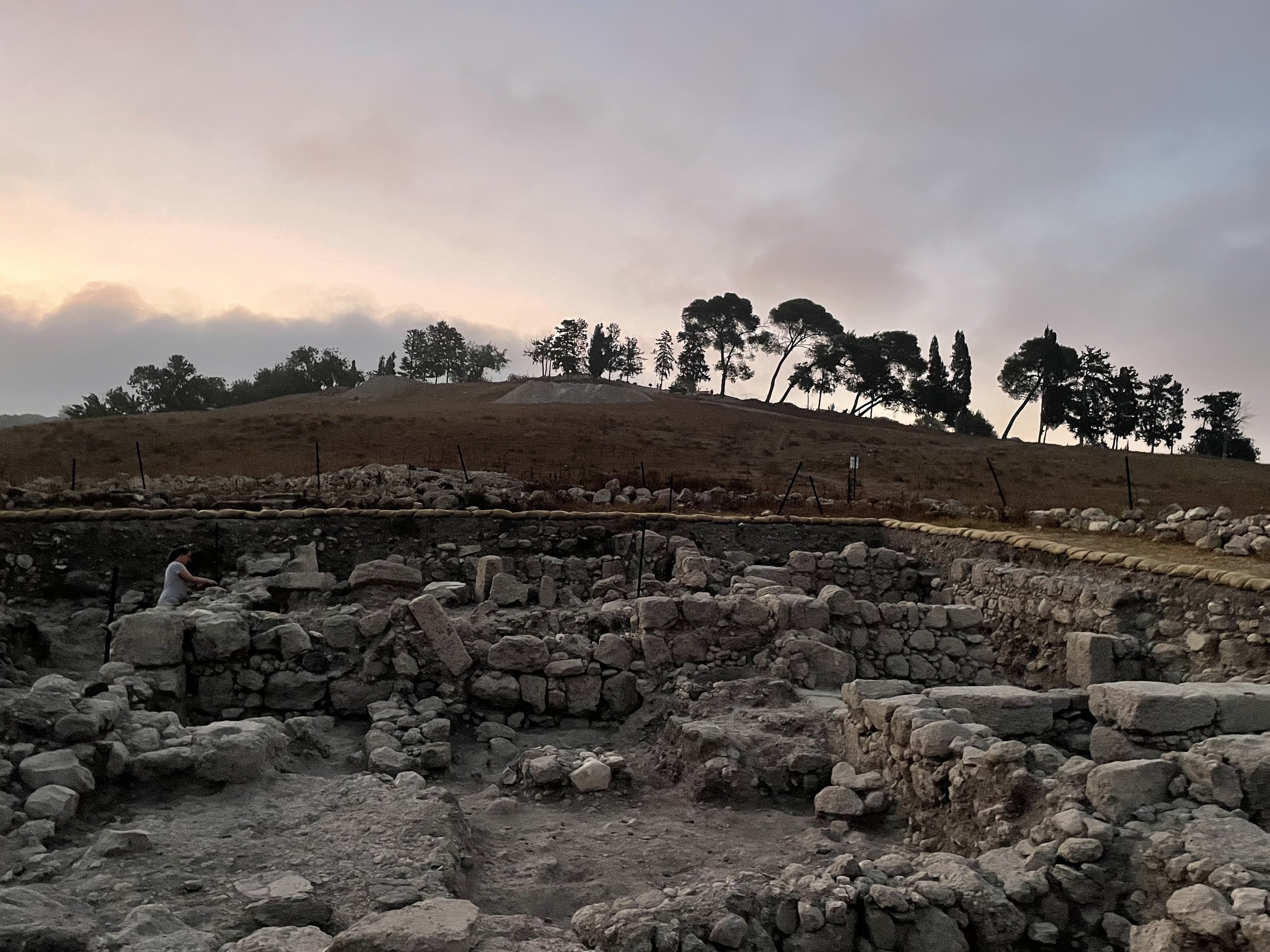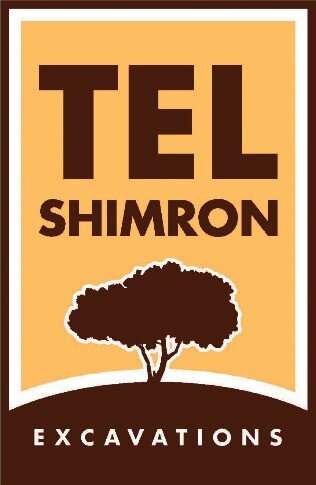
Middle Bronze Age Research Questions
By Adam Miglio
Tel Shimron reached its greatest size during the MB, when it expanded to approximately 19.5 hectares (Portugali 1982). Surveys of the site suggest that the MB II-III was the most recent deposition across the western quarter of the Tel as well as on a more limited area of the acropolis (Raban 1982; Portugali 1982). The substantial MB II-III footprint revealed by survey data can be further correlated with an MB I Egyptian execration text (Posener 1940) that confirms the presence of notable settlement at this locale (š-mw-ʕ-nw) during this period. The extensive and accessible MB deposition at Tel Shimron will allow for the rare opportunity for broad exposure of the period and comparison between multiple areas at the same site. The location of Tel Shimron and its substantial MB settlement allow for the following robust research questions:
Chronology: Excavations at Tel Shimron will seek to clarify an absolute MB chronology for Canaan that can be correlated with wider Mediterranean chronologies. Results from Tel Ifshar (Marcus 2008a, 2008b, 2013) and from Tel Ashkelon (Bietak and Czerny, 2007; Bietak 2013; Stager, et al., in press) provide a reliable ceramic framework for reconstructing Canaan during the early MB. At the same time, excavations at Tel Shimron will use current microarchaeological techniques in coordination with the Weizmann Institute of Science to provide greater certainty and reliability in the development of an absolute MB chronology (cf. Toffolo, et al. 2014). Important advances in the absolute chronologies and histories of Anatolia and Syro-Mesopotamia (Barjamovic, et al. 2012) and Egypt (Moeller and Marouard 2011; Höflmayer forthcoming a) have only begun to be coordinated with those of MB Canaan, since synchronisms between these regions are still relatively few and often debated (Höflmayer 2012; forthcoming b). The location of Tel Shimron in the Jezreel Valley has the potential to develop an absolute chronology for MB Canaan in connection with the chronologies in Anatolia, Syro-Mesopotamia as well as with Middle Kingdom Egypt.
Port Power and Jezreel Valley Interconnections: Research at Tel Shimron will investigate the role of the site in the emerging (MB I) and burgeoning (MB II-III) networks of port power during the period. During the MB I, a maritime system emerged in the eastern Mediterranean along the Levantine and Egyptian coasts– from Tell Atçana and Tell el-Brak, to Tel Kabri and Tel el-Dab’a. Coastal sites in the southern Levant such as Tel Acco and Tel Ashkelon served as economic centers during the MB I (Gophna and Beck 1981; Stager 2001). Subsequently, coastal influences spread along valleys to inland settlements and catalyzed a process of urbanization throughout the Levant (Cohen 2002). Through partnership with the Jezreel Valley Regional Project, excavations at Tel Shimron will consider when and to what extent this site was integrated into networks of port power. It will further study how these networks affected urbanization at the site as well as within the Jezreel Valley (cf. Greenberg 2002).
Valley and Hill Country Symbiosis: Research at Tel Shimron will evaluate the symbiosis between the Jezreel Valley and the lower Galilee. Several surveys of the lower Galilee have been conducted and have documented settlement fluctuations in the region (Zori 1977; Raban 1982; Gal 1980, 1981, 1992): settlements in the lower Galilee markedly increased during the MB II-III. Excavation at Tel Shimron in cooperation with the Jezreel Valley Regional Project will help to define the nature of Shimron’s relationship with the hill country of the lower Galilee throughout the MB. The connection of Tel Shimron with the hill country, then, will be compared and contrasted with the relationship between the highlands and lowlands found at other nearby sites, such as Yoqne’am, Megiddo, Ta’anach, and Tel Kabri (Yasur-Landau, et al. 2008).
Bibliography
Barjamovic, G., Hertel, T. and Larsen, M.T. 2012. Ups and Downs at Kanesh: Chronology,History and Society in the Old Assyrian Period. Vol. 20 of PIHANS. Leiden: Nederlands Instituut voor het Nabije Oosten.
Bietak, M. and Czerny, E. 2007. The Synchronisation of Civilisations in the Eastern Mediterranean in the Second Millennium B.C. III. Proceedings of the SCIEM 2000 – 2nd EuroConference, Vienna 28th of May – 1st of June 2003. CChEM 9. Wien: Osterreichischen Akademie der Wissenschaften.
Cohen, S. 2002. Canaanites, Chronologies, and Connections: The Relationship of Middle Bronze Age IIA Canaan to Middle Kingdom Egypt. SAHL 3. Winona Lake: Eisenbrauns.
Gal, Zvi. 1980. Ramat Issachar: Ancient Settlements in a Peripheral Region. Tel Aviv: Hakkibbutz Hammeʾuḥad. [Hebrew]
______ 1981. Tel Rekhesh and Tel Qarney Ḥiṭṭin. Eretz-Israel 15, 213-221. [Hebrew]
______ 1992. Lower Galilee During the Iron Age. American Schools of Oriental Studies Dissertation Series 8. Winona Lake, IN: Eisenbrauns.
Gophna, R. and Beck, P. 1981. “The Rural Aspect of the Settlement Pattern of the Coastal Plain in the Middle Bronze Age II.” Tel Aviv 8: 147–50.
Greenberg, R. 2002. Early Urbanizations in the Levant: A Regional Narrative. London: Leicester University Press.
Höflmayer, F. (forthcoming a). “An Early Date for Khayan and its Implications for Eastern Mediterranean Chronologies.”
______ (forthcoming b). “Carbone-14 comparé: Middle Bronze Age I (IIA) chronology, Tell el-Dabʿa and radiocarbon data.”
Marcus, E.S. 2013. “Correlating and Combining Egyptian Historical and Southern Levantine Radiocarbon Chronologies at Middle Bronze Age IIa Tel Ifshar, Israel.” In Radiocarbon and the Chronologies of Ancient Egypt, edited by A. J. Shortland and C. Bronk Ramsey, 182–208. Oxford: Oxford University Press.
Marcus, E.S., Porath, Y. and Paley, S.M. 2008. “The Early Middle Bronze Age IIa Phases at Tel Ifshar and their External Relations.” Ägypten und Levante/Egypt and the Levant 18, 221-224.
Marcus, E.S. et al. 2008. “The Middle Kingdom Egyptian Pottery from Middle Bronze Age IIa Tel Ifshar.” Ägypten und Levante/Egypt and the Levant 18, 203-221.
Moeller N. and Marouard, G. 2011. “Discussion of Late Middle Kingdom and Early Second Intermediate Period History and Chronology" in Relation to the Khayan Sealings from Tell Edfu.” Ägypten und Levante/Egypt and the Levant 21, 87–121.
Portugali, Yuval. 1982. “A Field Methodology for Regional Archaeology (The Jezreel Valley Survey, 1981).” Tel Aviv 9/2: 170–88.
Posener, G. 1940. Princes et pays d’Asie et de Nubie. Bruxelles: Fondation Egyptologique Reine Elisabeth.
Raban, Avner. 1982 Archaeological Survey of Israel: Nahalal Map (28) 16–23. Jerusalem: Archaeological Survey of Israel.
Stager, L. 2001. “Port Power in the Early and the Middle Bronze Age: The Organization of Maritime Trade and Hinterland Production.” In Studies in the Archaeology of Israel and Neighboring Lands: In Memory of Douglas L. Esse, edited by S.R. Wolff, 625-638. SAOC 59. Chicago: Oriental Institute, University of Chicago.
Yasur-Landau, A., Cline, E.H. and Pierce, G.A. 2008. “Middle Bronze Age Settlement Patterns in the Western Galilee, Israel.” Journal of Field Archaeology 33: 1–25.
Zori, N. 1977. The Land of Issachar: An Archaeological Survey. Jerusalem: Israel Exploration Society. [Hebrew]
